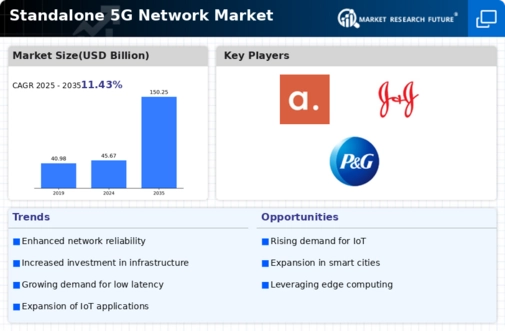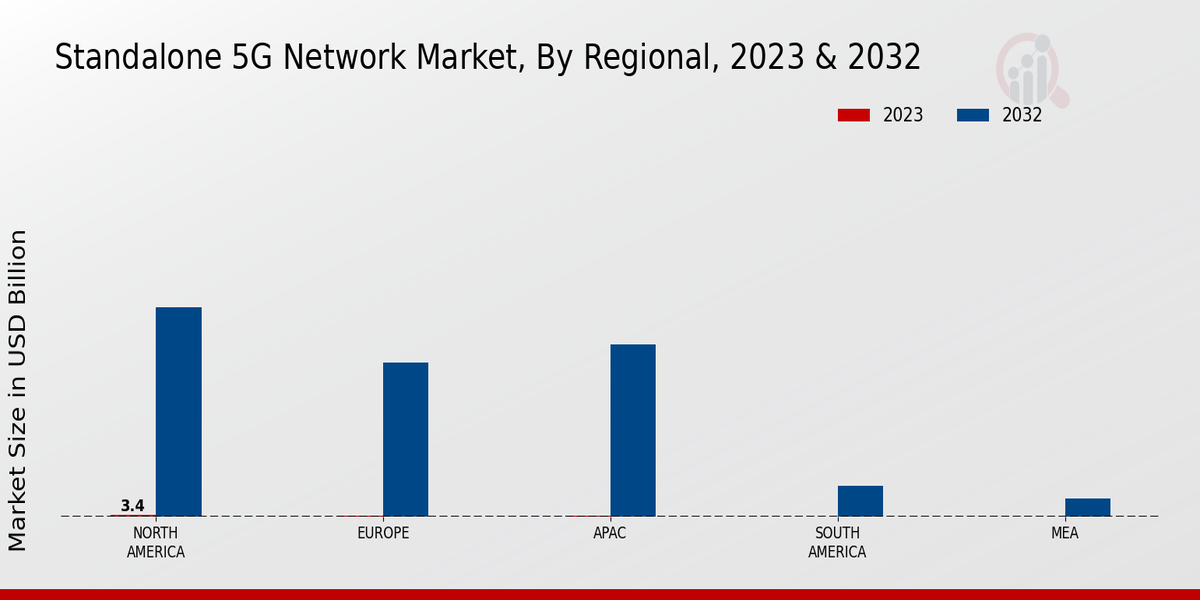Expansion of Smart Cities
The development of smart cities significantly propels the Global Standalone 5G Network Market Industry. Governments worldwide are investing in infrastructure that supports smart technologies, such as intelligent traffic management and energy-efficient systems. These initiatives necessitate a reliable and high-capacity network, which 5G can provide. As urban populations grow, the demand for efficient city management solutions intensifies. This trend suggests that the market could see substantial growth, with projections indicating a rise to 150.25 USD Billion by 2035, as cities increasingly adopt 5G to enhance urban living.
Support for Advanced Technologies
The Global Standalone 5G Network Market Industry is poised for growth due to its support for advanced technologies such as augmented reality, virtual reality, and artificial intelligence. These technologies require high bandwidth and low latency, which 5G networks can provide. As industries explore innovative applications, the demand for 5G infrastructure is expected to rise. This trend indicates that businesses are likely to invest heavily in 5G capabilities to remain competitive. The integration of these technologies into everyday applications suggests a transformative impact on various sectors, further solidifying the market's trajectory.
Enhanced Mobile Broadband Services
The Global Standalone 5G Network Market Industry benefits from the enhancement of mobile broadband services, which cater to the growing consumer demand for seamless connectivity. With the rise of streaming services, online gaming, and remote work, users expect high-speed internet access at all times. 5G technology promises to deliver significantly faster data rates and lower latency compared to previous generations. This shift is likely to attract more subscribers, further driving market growth. The anticipated compound annual growth rate of 11.43% from 2025 to 2035 underscores the potential for sustained expansion in this segment.
Government Initiatives and Investments
Government initiatives and investments play a crucial role in shaping the Global Standalone 5G Network Market Industry. Many countries are implementing policies to accelerate 5G deployment, recognizing its potential to drive economic growth and innovation. These initiatives often include funding for research and development, as well as incentives for private sector participation. Such support is likely to create a conducive environment for market expansion. As governments prioritize digital infrastructure, the 5G market is expected to flourish, aligning with broader economic objectives and enhancing global competitiveness.
Increased Demand for High-Speed Connectivity
The Global Standalone 5G Network Market Industry experiences a surge in demand for high-speed connectivity, driven by the proliferation of IoT devices and smart technologies. As industries increasingly adopt automation and real-time data processing, the need for robust network infrastructure becomes paramount. In 2024, the market is projected to reach 45.67 USD Billion, reflecting a growing recognition of 5G's potential to enhance operational efficiency. This demand is likely to escalate as businesses seek to leverage advanced technologies, indicating a significant shift towards 5G-enabled solutions across various sectors.















Leave a Comment